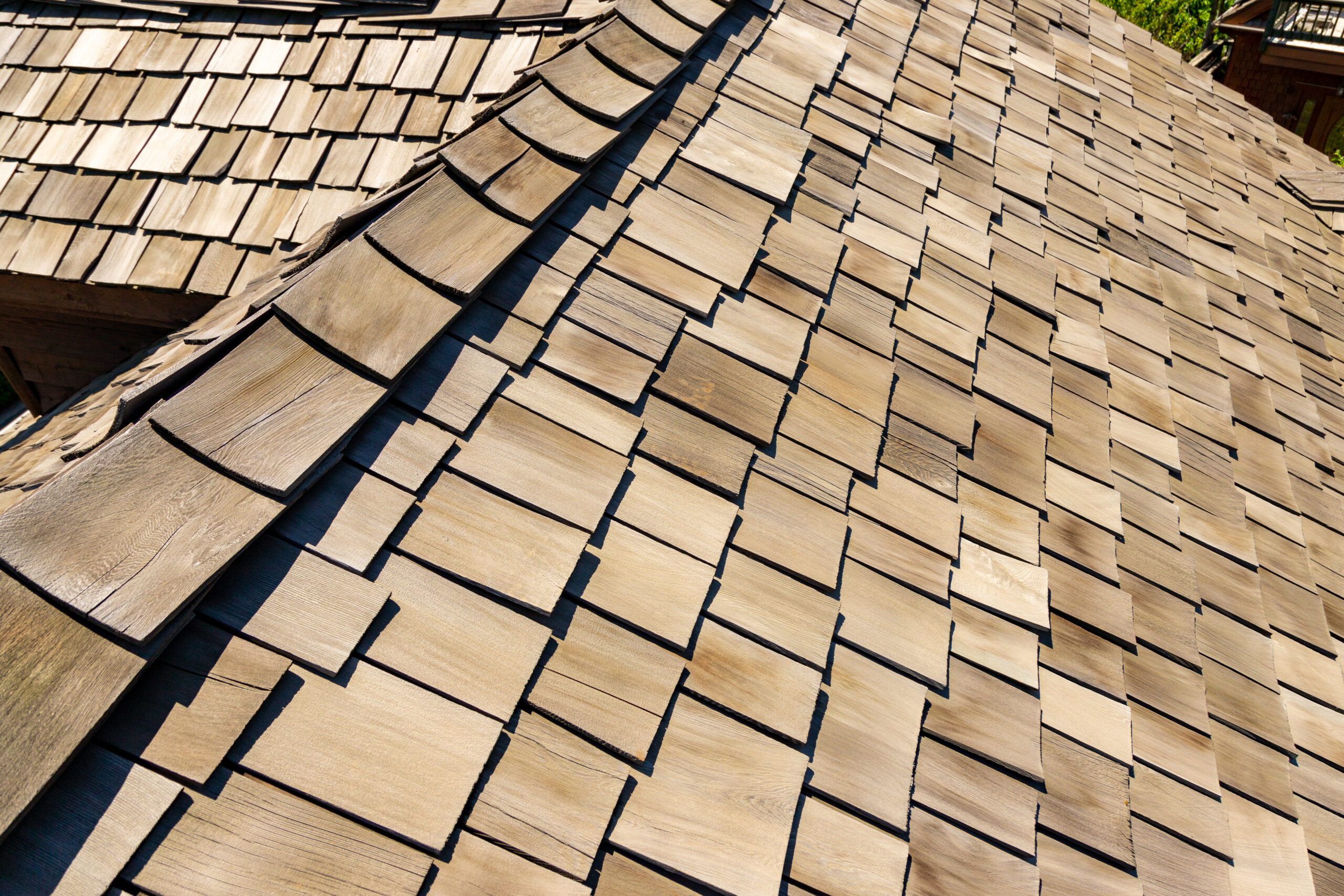- Home
- Services
Residential Services
Commercial Services
Additional Services
- Areas We Serve
- Financing
- Resources
- About us
- Contact Us
Setting the Standard in AZ Roofing Since 1993
Shake roofing gives homes a timeless, rustic look that stands up well against Arizona’s intense weather. Over time, natural wear develops on every roof, but not all signs of aging mean your roof is failing. Cedar and wood shakes age differently than asphalt or tile roofs, showing visible weathering even while maintaining strength and integrity.

Homeowners in Phoenix, Tucson, and surrounding areas often mistake this natural aging for damage. Cracks, discoloration, and slight curling can appear alarming but are often just cosmetic changes. Knowing which signs require maintenance versus replacement helps you avoid unnecessary costs while keeping your roof in great condition. Let’s break down what visual shake roof changes are normal, and which ones actually signal trouble.
Wood shakes gradually lose their fresh, reddish tone and turn silvery-gray over time. This color shift isn’t a sign of damage; it’s a natural reaction to sun exposure and moisture. The change actually creates a protective layer that shields the wood from further UV damage.
In Arizona’s desert climate, this graying process happens faster because of strong sunlight. Many homeowners worry their shakes look old or faded, but in reality, this surface change can indicate that your roof is settling into its long-term protective phase. Regular cleaning and inspection help preserve this layer without disturbing the wood fibers beneath.
Small surface cracks, sometimes called “checking,” are one of the most common signs of shake aging. They appear as thin lines along the surface of the wood caused by the natural expansion and contraction that happens with temperature swings.
In the Arizona heat, these cracks can form more quickly but often don’t go deep enough to affect the roof’s water resistance. The key factor is whether the shakes are still laying flat and overlapping properly. If they are, your roof continues to shed water effectively. Annual inspections from experts like Lyons Roofing help ensure that minor cracks remain harmless and don’t expand into deeper splits.
Wood shakes are natural materials, so they react to moisture and heat. In dry conditions, they can curl slightly at the edges as the wood loses moisture. During humid or rainy periods, they often flatten back out.
Slight curling is expected and doesn’t necessarily indicate that the shake is failing. The problem arises only when shakes curl severely or lift enough to expose the underlayment. As long as the shakes stay tight to the roof and overlap correctly, your roof remains protected from leaks and UV rays. Keeping gutters clean and maintaining ventilation helps minimize excess drying that leads to curling.
Uneven color across your shake roof is another common concern for homeowners. Over time, different areas of the roof receive varying amounts of sunlight, leading to spots that appear darker or lighter. In shaded areas, you might notice some algae or moss growth, especially after monsoon season.
Light staining or minor algae growth is mostly cosmetic and doesn’t mean the shakes are failing. Gentle cleaning with low-pressure washing or a soft brush removes buildup without damaging the wood. The key is to avoid harsh chemical cleaners or high-pressure systems that strip protective oils from the shakes.
As wood contracts and expands, small shifts can expose nail heads or create hairline gaps between shakes. These gaps often close again with humidity, and exposed nails can be resealed or replaced during routine maintenance.
What matters is whether water can penetrate beneath the shakes. If your roof still sheds water properly and there’s no evidence of leaks inside the attic, these small separations are not cause for replacement. Professional maintenance every few years keeps these small changes from turning into larger issues.
Phoenix and Tucson experience some of the most extreme weather patterns in the country, from scorching sun to sudden monsoon rains. These conditions accelerate visible changes in shake roofs, making them appear older than they are. Yet many of these visual signs are simply the result of natural seasoning.
Sunlight dries out the surface faster, leading to fine surface cracks, while dust and wind can alter the color tone. A well-maintained shake roof in Arizona can last decades despite these effects. The key is applying protective treatments periodically and ensuring good attic ventilation to balance temperature and humidity beneath the roof.
Proactive maintenance helps your shake roof look great and perform efficiently without premature replacement. Simple steps can extend its lifespan and delay major repairs.
Here’s what helps most:
These maintenance efforts keep the roof flexible and durable, allowing natural weathering without compromising performance.
Arizona homeowners often worry about shake roof changes that look alarming but aren’t dangerous. Our roofing specialists help identify what’s normal and what’s not.
Common concerns we address include:
Lyons Roofing inspects, repairs, and restores shake roofs so you can keep the natural beauty of wood while maintaining long-term protection.
How long does a shake roof typically last in Arizona?
With proper maintenance and ventilation, a shake roof in Arizona can last 25 to 35 years, even under intense sun and heat.
Are surface cracks in my shake roof dangerous?
Not usually. Small surface cracks are common and don’t always affect waterproofing unless they deepen or spread.
Should I replace my roof if the shakes are curling slightly?
Slight curling is normal and doesn’t require replacement unless shingles lift enough to expose the underlayment.
Can I clean my shake roof myself?
It’s best to hire professionals. Using the wrong pressure or chemicals can damage the shakes or strip protective oils.
How often should I have my shake roof inspected?
An annual or biannual inspection is ideal for spotting potential problems early and ensuring preventive care.
Don’t replace your shake roof too soon. Let Lyons Roofing inspect and preserve it for years to come. Call (520) 442-1121 today for a detailed evaluation.